In the grand theatre of nature, the choice of nesting location by avian birds often unveils a profound adaptation to the challenges of their environment.
The question of why most avian species construct their nests atop trees instead of on the ground leads us to explore the intricacies of survival strategies and ecological dynamics.
The preference for elevated nests speaks to the delicate balance between protection, accessibility, and resource availability.
Understanding why do most avian birds make nests on top of trees instead of the ground offers a window into the evolutionary history of birds and the multifaceted interplay between predation, incubation, and environmental conditions.
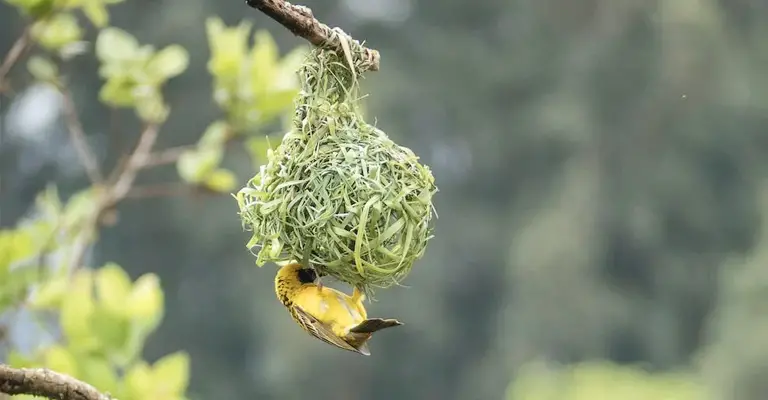
Why Do Most Avian Birds Make Nests On Top Of Trees Instead Of On The Ground?
Most avian birds make nests on top of trees instead of the ground for various reasons.
Here are some of them:
Safety
Trees provide protection from predators, such as cats, dogs, snakes, or foxes that may prey on the eggs or chicks of ground-nesting birds. Trees also offer shelter from harsh weather, such as rain, wind, or heat.
Food
Trees provide access to food sources, such as fruits, seeds, nuts, or insects, that may not be available on the ground. Trees also attract other birds that may share or exchange food with the tree-nesting birds.
Space
Trees provide more space for nesting than the ground, which may be limited or crowded by other animals or plants.
Trees also allow birds to choose different heights and orientations for their nests, depending on their preferences and needs.
Visibility
Trees provide a better view of the surroundings than the ground, which may be obstructed by vegetation or terrain.
Trees enable birds to spot potential mates, rivals, predators, or prey more easily and quickly.
Communication
Trees provide a better platform for communication than the ground, which may be muffled by noise or interference.
Trees enhance the transmission and reception of vocalizations, such as songs, calls, or alarms, that birds use to convey information or emotions.
Camouflage
Trees provide a better camouflage than the ground, which may be exposed or conspicuous.
Trees blend in with the colours and shapes of the leaves, branches, or bark, making it harder for predators or competitors to detect or locate the nests.
Temperature
Trees provide a better temperature regulation than the ground, which may be too hot or cold.
Trees moderate the temperature by providing shade, insulation, or ventilation, depending on the season and the time of day.
Hygiene
Trees provide better hygiene than the ground, which may be dirty or contaminated. Trees reduce the risk of infection or disease by keeping the nests away from parasites, pathogens, or waste that may be present on the ground.
Tradition
Trees provide a better tradition than the ground, which may be unfamiliar or novel. Trees reflect the evolutionary history and adaptation of birds to their habitats and niches.
Trees also influence the cultural and social behaviour of birds that inherit or learn their nesting habits from their parents or peers.
Which Bird Makes Nests On Top Of Trees Instead Of The Ground?
Many birds make nests on top of trees instead of the ground, but here are some examples of them:
Eagles
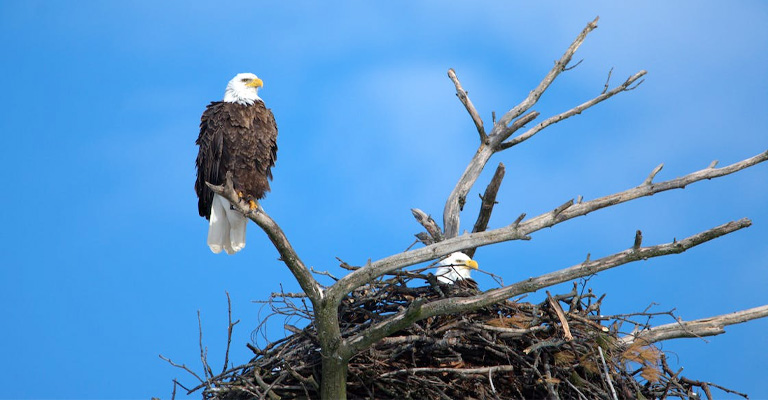
Eagles are large and powerful birds of prey that belong to the family Accipitridae. They have hooked bills, strong talons, and keen eyesight.
Eagles build large and sturdy nests on high and inaccessible trees, where they can protect their eggs and chicks from predators and competitors.
Woodpeckers
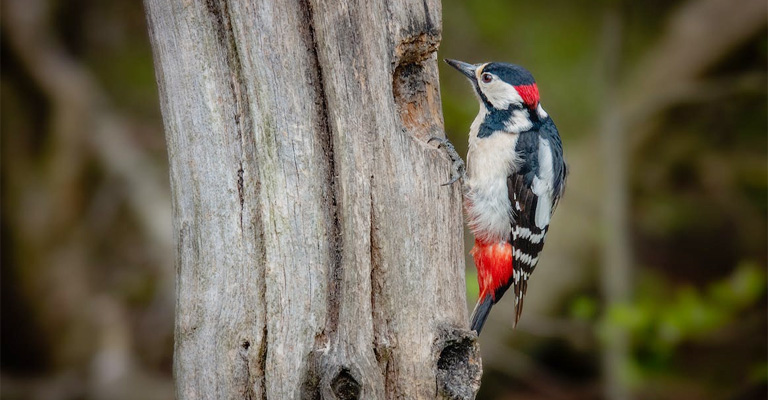
Woodpeckers are small and colourful birds that belong to the family Picidae. They have chisel-like bills, stiff tails, and zygodactyl feet.
Woodpeckers excavate holes or cavities on dead or decaying trees, where they can nest and store food. They also use their holes to drum or communicate with other woodpeckers.
Hummingbirds
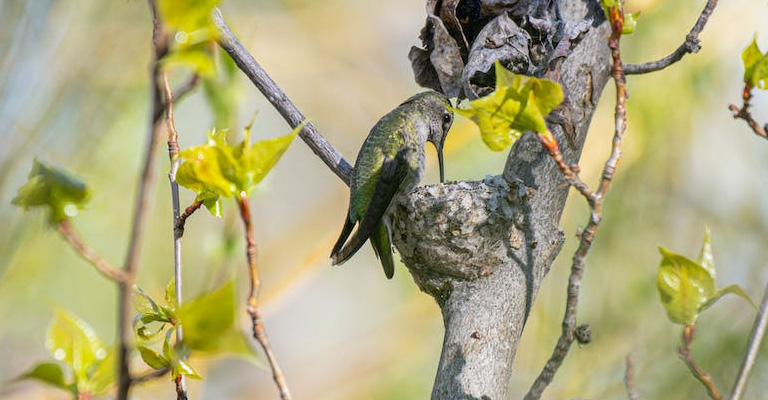
Hummingbirds are tiny and iridescent birds that belong to the family Trochilidae. They have long and slender bills, rapid wingbeats, and the ability to hover and fly backwards.
Hummingbirds build small and delicate nests on thin and flexible branches, where they can camouflage their eggs and chicks from predators and parasites.
Orioles
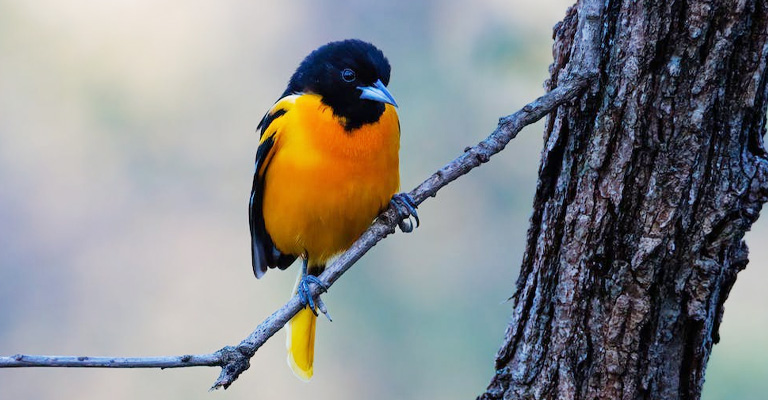
Orioles are medium-sized and bright-coloured birds that belong to the family Icteridae.
They have pointed bills, long tails, and musical songs. Orioles weave elaborate and hanging nests on the ends of branches, where they can avoid predators, parasites, or weather damage.
Toucans
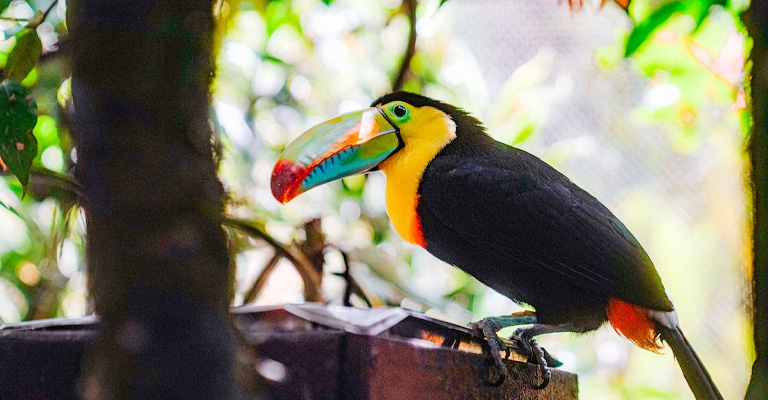
Toucans are large and colourful birds that belong to the family Ramphastidae. They have huge and curved bills, short wings, and long tongues.
Toucans use natural or woodpecker-made holes on tree trunks or branches, where they can nest and roost. They also use their bills to regulate their body temperature.
Hornbills
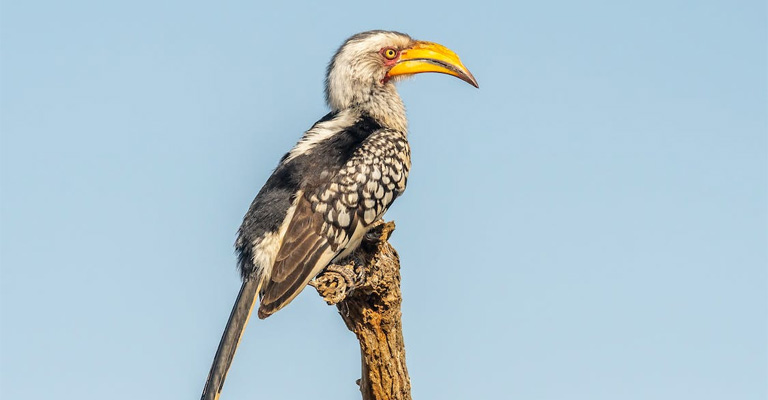
Hornbills are large and distinctive birds that belong to the family Bucerotidae. They have long and curved bills, casques or helmets on their heads, and long eyelashes.
Hornbills seal themselves or their mates inside tree cavities with mud or faeces, where they can incubate their eggs and raise their chicks in safety.
Parakeets
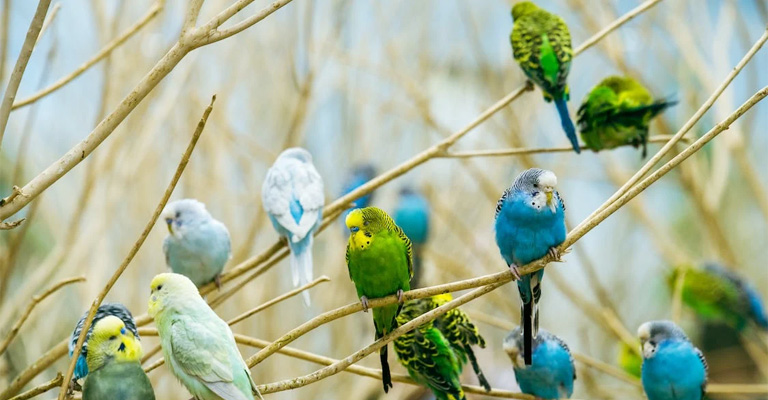
Parakeets are small and colourful parrots that belong to the subfamily Psittacinae. They have curved bills, long tails, and the ability to mimic sounds.
Parakeets use natural or artificial holes on tree trunks or branches, where they can nest in colonies or pairs. They also use their bills to chew or manipulate objects.
Weaver birds
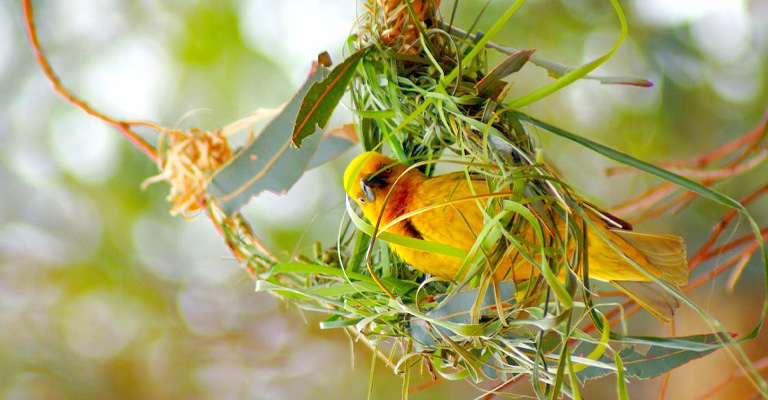
Weaver birds are small and social birds that belong to the family Ploceidae. They have conical bills, bright plumage, and complex vocalizations.
Weaver birds construct intricate and woven nests on tree branches or reeds, where they can breed cooperatively or polygamously.
Bald eagles
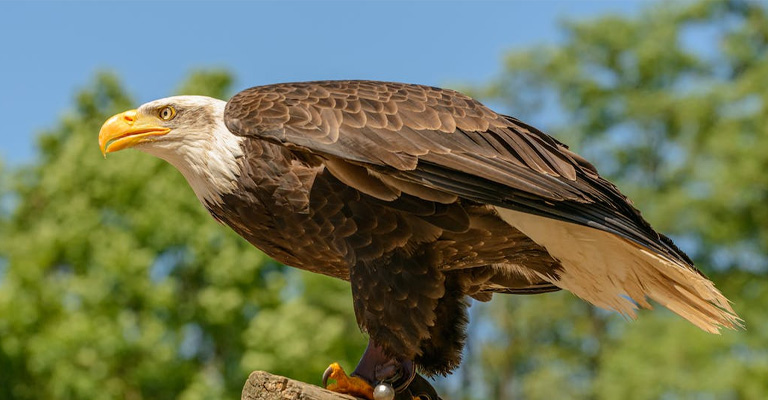
Bald eagles are a group of large and majestic birds that belong to the family Accipitridae.
They have white heads, brown bodies, yellow bills, and powerful talons. Bald eagles build huge and durable nests on tall and sturdy trees, where they can mate for life and raise their young for several years.
What To Do When Avian Birds Make Nests On Top Of Trees Instead Of The Ground?
When avian birds make nests on top of trees instead of the ground, you may want to do the following things:
Observe And Appreciate Them
Avian birds are amazing creatures that have different skills and behaviours for nesting on trees.
You may want to observe and appreciate them from a safe distance, using binoculars or a camera with a zoom lens. You may also want to learn more about them, such as their names, types, habits, or roles.
Respect And Protect Them
Avian birds are living beings that have rights and needs. You may want to respect and protect them from harm or disturbance, such as noise, pollution, or poaching.
You may also want to support their conservation efforts by donating money, volunteering time, or spreading awareness.
Provide Them With Food And Water
Avian birds need food and water to survive and thrive. You may want to provide them with natural sources of food and water, such as flowers, seeds, fruits, or feeders.
You may also want to avoid giving them harmful or unnatural food, such as bread, chocolate, or salt.
Provide Them With Nesting Materials
Avian birds need nesting materials to build or repair their nests on trees. You may want to provide them with natural or artificial materials, such as twigs, leaves, grasses, or yarn.
You may also want to avoid giving them toxic or dangerous materials, such as plastic, metal, or chemicals.
Provide Them With Shelter And Security
Avian birds need shelter and security to rest and breed on trees. You may want to provide them with suitable trees or structures, such as branches, boxes, or platforms.
You may also want to avoid removing or damaging their nests or habitats.
Interact With Them Gently And Patiently
Avian birds are social and intelligent animals that can interact with humans. You may want to interact with them gently and patiently, using sounds, gestures, or treats.
You may also want to avoid scaring or stressing them out, such as by chasing or capturing them.
Record And Share Your Experience
Avian birds are fascinating and beautiful animals that can inspire awe and curiosity in people of all ages.
You may want to record and share your experience with them using photos, videos, or stories. You may also want to join a local or national bird club or organization to learn more about birds and meet other bird lovers.
Create Art Inspired By Them
Avian birds are artistic and colourful animals that can stimulate creativity and imagination in people of all backgrounds.
You may want to create art inspired by them using different media, such as painting, drawing, sculpting, or writing. You may also want to display or sell your art to express yourself or support a cause.
Have Fun With Them
Avian birds are playful and humorous animals that can bring joy and laughter to people of all moods.
You may want to have fun with them, using different activities, such as games, puzzles, or jokes. You may also want to enjoy their company and friendship.
FAQ
Birds opt for elevated nests as they provide protection against ground predators. Being off the ground minimizes the risk of eggs and chicks being targeted by animals like rodents or snakes.
Yes, elevated nests are shielded from flooding and dampness that ground nests might face. Treetops provide more favourable conditions for incubation and chick-rearing, away from potential water accumulation.
Absolutely. Elevated nests offer better visibility for spotting predators approaching from below. This vantage point enables birds to detect threats and react more effectively, ensuring the safety of their offspring.
Many birds nest in trees close to reliable food sources. By being higher up, they can quickly locate and access food for themselves and their chicks, minimizing energy expenditure.
Certainly, while many birds prefer tree nests, ground-nesting birds have their own set of adaptations. Some birds, like penguins and some shorebirds, have evolved to thrive with ground nests, often in environments with fewer tree options.
Conclusion
The choice of nesting high above the ground rather than at its mercy is a testament to the astute strategies that birds have evolved over millions of years.
This adaptation reflects the fusion of predator avoidance, shelter from the elements, and optimal incubation conditions.
As we marvel at the sight of nests nestled among branches, we witness a remarkable demonstration of nature’s ingenuity. The high-rise approach to nesting mirrors the intricate dance between survival and ecological harmony.
It’s a reminder that even in seemingly small choices, the birds’ ancient wisdom guides them to thrive within the ever-evolving tapestry of life.